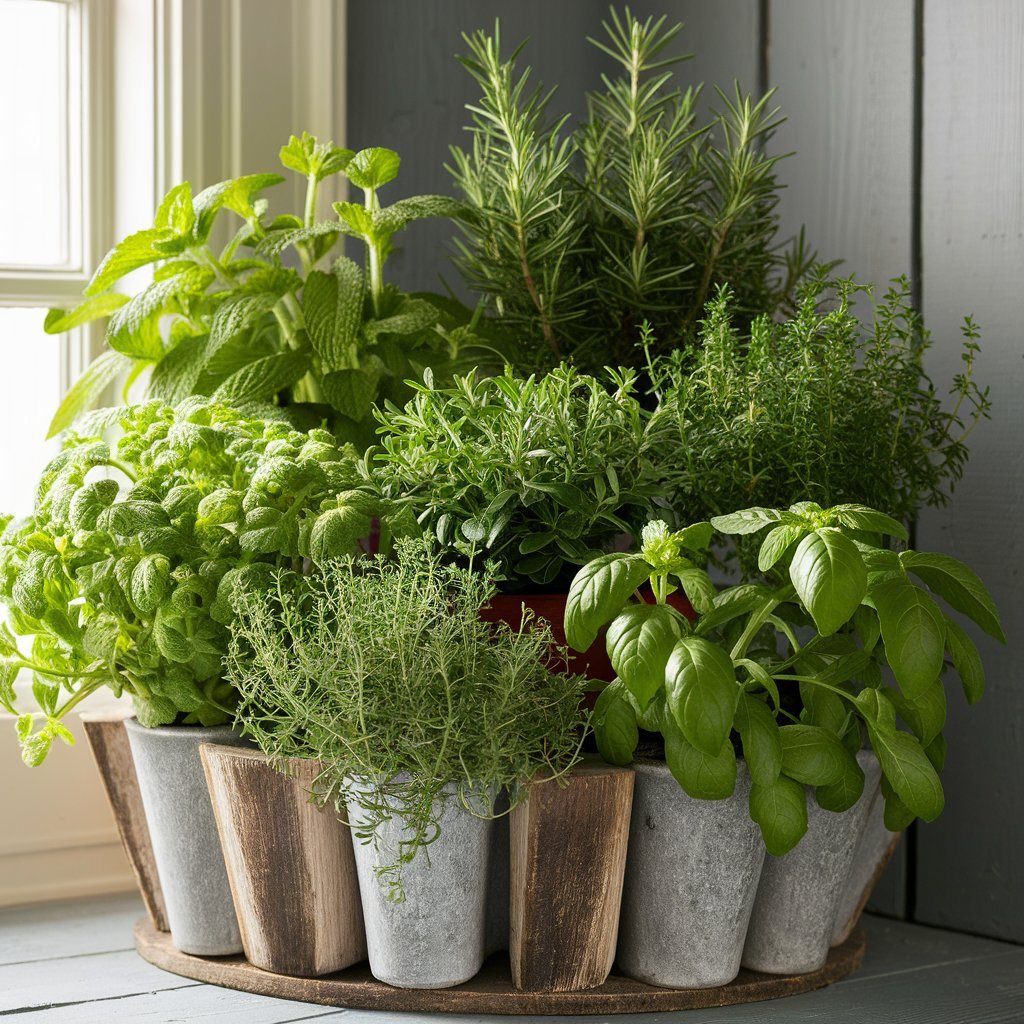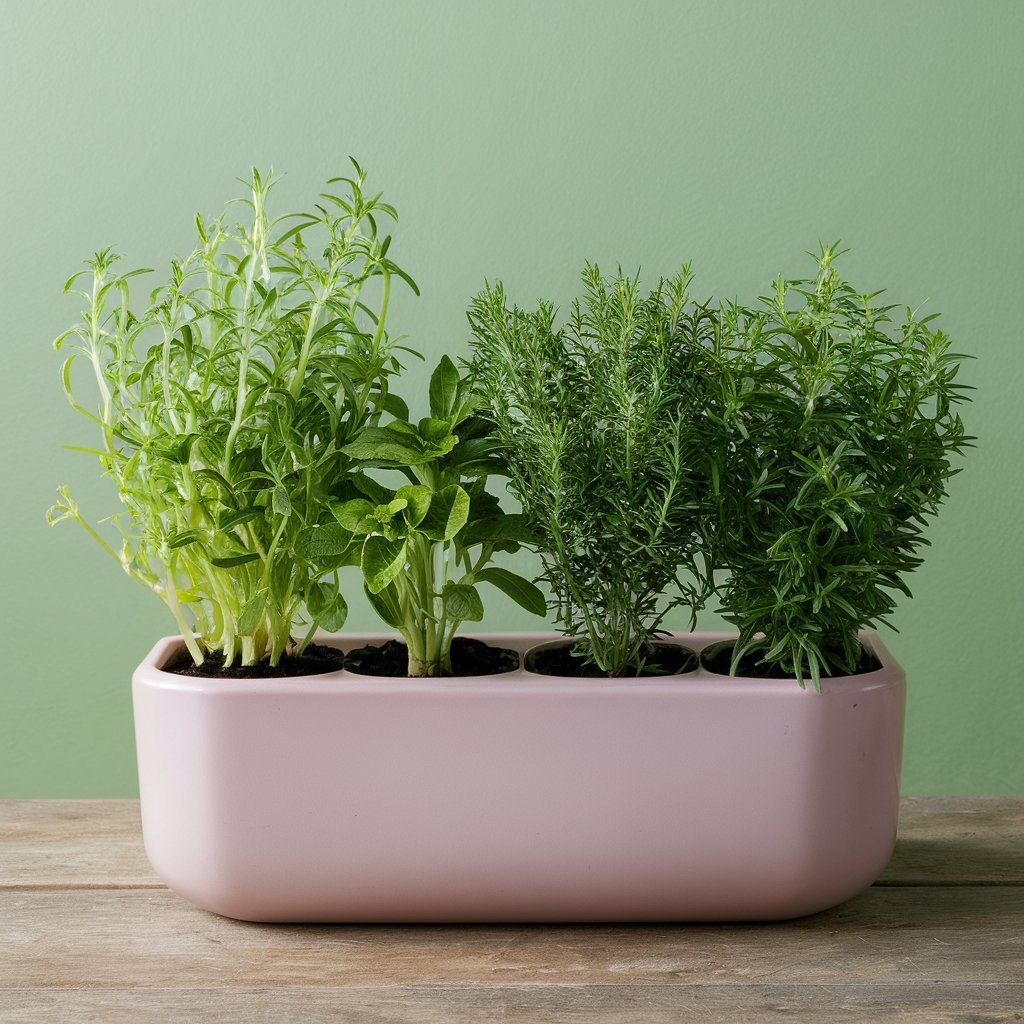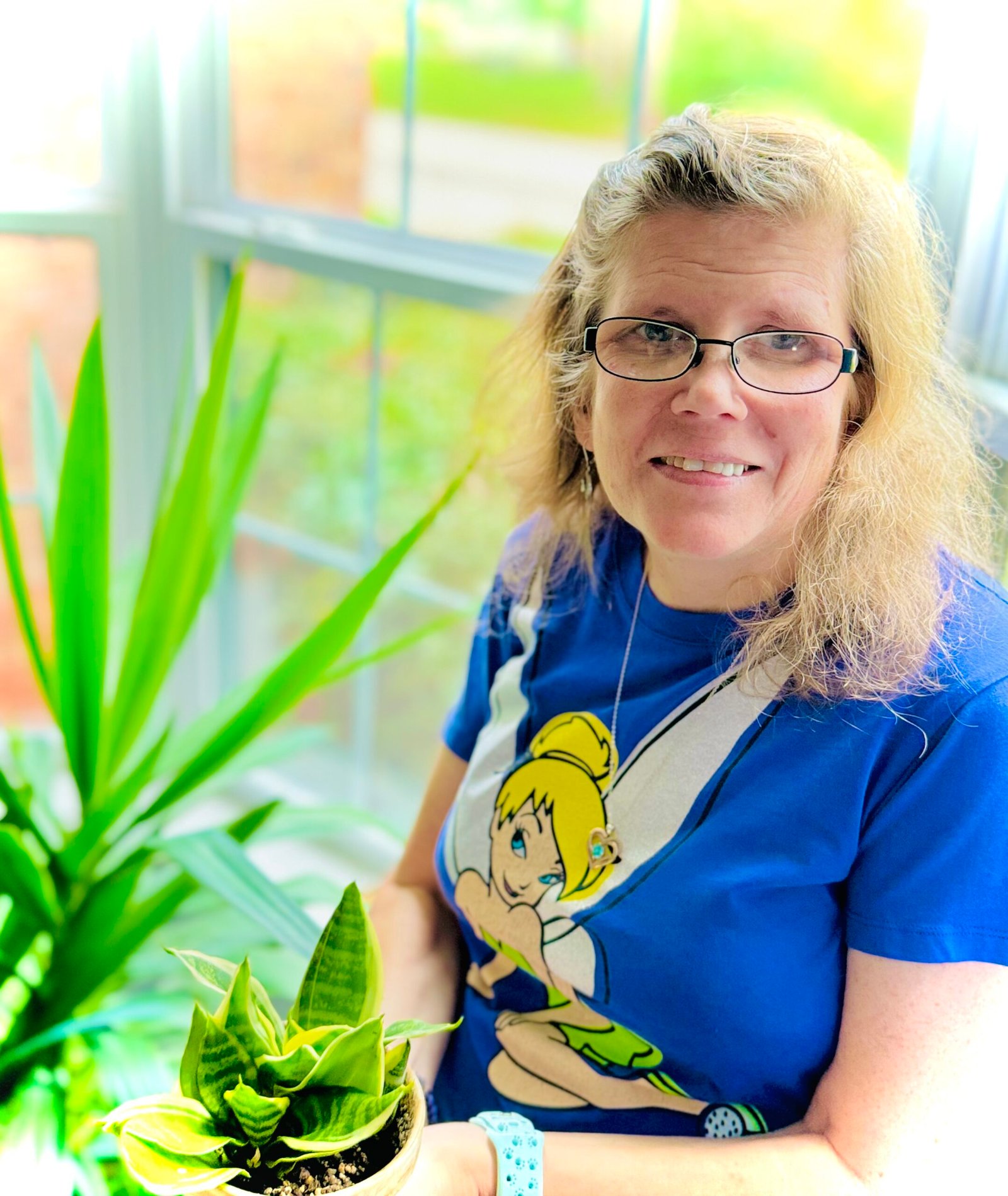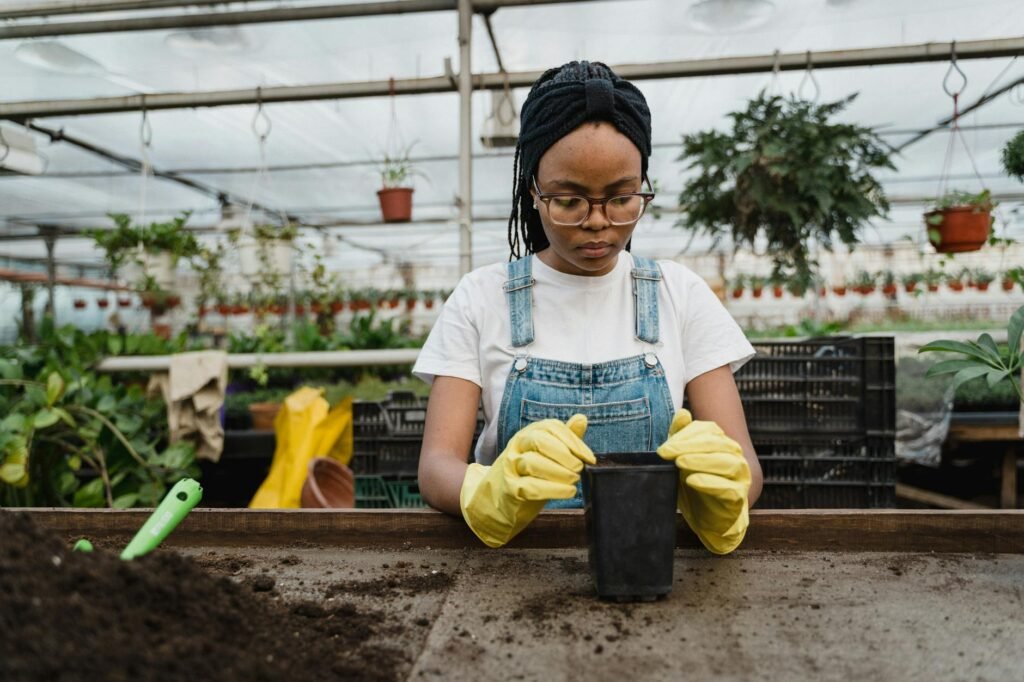Why You Need an Indoor Herb Garden
Growing herbs inside your home isn’t just about adding a splash of green. It’s about having fresh herbs at your fingertips all year long and saving some cash while you’re at it. Let me tell you why an indoor herb garden is a game-changer.
Fresh Herbs Anytime
Imagine having fresh basil or mint whenever you want, even in the dead of winter. That’s the magic of an indoor herb garden. If you live somewhere like Toronto, where outdoor gardening takes a break in the colder months, this is a lifesaver. No more running to the store for a sprig of rosemary.
Using grow lights, especially LED ones, you can mimic sunlight without jacking up your electricity bill. Here’s a quick cheat sheet for light needs of some popular herbs:
| Herb | Light Requirement |
|---|---|
| Basil | 6-8 hours of direct light |
| Mint | 3-4 hours of indirect light |
| Chives | 6-8 hours of direct light |
These lights are efficient and give your plants the exact light they need, making sure your indoor garden thrives.

Save Money and Go Green
Growing your own herbs is a wallet-friendly move. The cost of seeds or small plants is peanuts compared to what you’d spend buying herbs at the store. Plus, you get the satisfaction of snipping fresh herbs right from your own garden.
There’s also a green angle. By growing herbs at home, you cut down on plastic packaging and the carbon footprint from transporting store-bought herbs. Fresh herbs from your garden are a healthy way to jazz up your meals without adding extra calories, salt, or sugar.
And let’s not forget the aesthetic appeal. Indoor herb gardens can be a visual treat with their different colors and shapes. They’re not just tasty; they’re also a feast for the eyes. Here are some herbs that are both delicious and decorative:
- Basil
- Mint
- Chives
- Sage
- Rosemary
- Thyme
So, by setting up an indoor herb garden, you get fresh herbs all year, save money, and live a bit greener. For more tips on growing herbs indoors, check out our detailed guides and articles.
Growing Herbs Indoors Successfully
Starting an indoor herb garden can be super satisfying. I’m here to share some tips on light needs, the best containers, and potting mix to keep your herbs happy and healthy.
Light Needs for Herbs
Light is like the VIP pass for your indoor herb garden. Different herbs have their own light preferences, and knowing these can make all the difference.
Natural Light
Most herbs need about 6-8 hours of sunlight daily to thrive (Gardening Know How). My kitchen windowsill gets plenty of sunlight, making it perfect for herbs like basil, mint, and chives. If your place is a bit dim, grow lights can save the day.
Grow Lights
Grow lights can mimic sunlight and help your herbs grow strong. Here are a few types to consider:
| Type | Pros | Cons |
|---|---|---|
| LED | Energy-efficient, long-lasting, emits red and blue light | Higher initial cost |
| Fluorescent | Affordable, emits a broad spectrum of light | Less efficient than LED, shorter lifespan |
| Incandescent | Cheap, easy to find | High energy use, generates heat |
(Source: University of Minnesota Extension)
I like LED grow lights for my herb garden because they’re energy-efficient and give off the right light for photosynthesis (University of Minnesota Extension).

Picking Containers and Potting Mix
Choosing the right containers and potting mix is key to a successful indoor herb garden.
Container Selection
When picking containers, make sure they have good drainage to avoid waterlogging. Here are some options:
| Container Type | Features |
|---|---|
| Plastic Pots | Lightweight, cheap, good drainage |
| Terra Cotta Pots | Porous, allows air circulation, looks nice |
| Self-Watering Pots | Convenient, keeps moisture levels steady |
I use a mix of plastic and terra cotta pots to give my herbs the best of both worlds. For more tips, check out our guide on container gardening for herbs.
Potting Mix
The right potting mix is crucial for your herbs’ health. A well-draining mix prevents root rot and supports growth. Here’s a simple recipe I use:
- Ingredients: 1 part perlite, 1 part peat moss, and 1 part potting soil
- Benefits: Drains well, retains moisture, provides nutrients
Mix these ingredients well before filling your containers. For more tips on growing herbs indoors, check out our article on how to grow herbs indoors.
By understanding light needs and picking the right containers and potting mix, you can grow a thriving indoor herb garden. Whether you’re into basil, mint, or rosemary, these tips will help you create a lush, green space at home.
Popular Herbs for Indoor Gardens
Growing herbs indoors can be a game-changer for your cooking and your home. Here are some of my top picks for indoor herb gardens, each bringing its own perks and flavors.
Basil, Mint, Chives
Basil
Basil is a must for Italian cuisine lovers. Its fragrant leaves can elevate any dish. When growing basil indoors, pinch the plant once it hits about 6 inches tall to stop it from blooming. This keeps it bushy and productive.
| Herb | Ideal Light | Watering Needs |
|---|---|---|
| Basil | Bright, indirect | Keep soil moist |
| Mint | Low to bright | Regular watering |
| Chives | Bright, indirect | Keep soil slightly moist |
- INDOOR GARDENING MADE EASY: Enjoy abundant harvests year round with the AeroGarden Harvest, an indoor hydroponic gardeni…
- ROOM FOR 6 PLANTS: This compact countertop garden features a spacious grow deck and water bowl so you can grow 6 differe…
- HIGH-PERFORMANCE GROW LIGHT: The full spectrum 20W LED grow light with an automatic on/off timer mimics natural sunlight…
- 300% Faster than Soil Planting: Start an indoor garden with the hydroponic growing system, which includes a water reserv…
- 10 Pods & Water Level Window Included: This indoor grow kit with light offers 10 growing stations, yet it costs less tha…
- 2 Growing Modes for Veggies, Fruits & Flowers: The grow light of our indoor veggie growing system features full-spectrum…

- Personalized Pods and Water Visual Window: Hydroponics growing system with light offers 12 grow stations,allowing you to…
- Innovative Grow Light Modes: Our garden kit indoor features unique veggie and fruit&flower modes tailored to different t…
- Ideal Growing Conditions:Our hydroponics growing system comes with a height-adjustable light post that can be raised up …

- [High-Performance Grow Lights] – The 24W LED lights of the hydroponics growing system simulate the sunlight spectrum. St…
- [Indoor Herb Garden] – Brighten up your kitchen by cultivating plants both decorative and practical. It can grow up to 1…
- [Height-Adjustable Garden Kit] – The height of the lighting part can be adjusted for veggies at different growth stages,…
Mint
Mint is super versatile and easy to grow. It thrives in various light conditions, from low light to bright indirect light. The refreshing aroma of mint leaves can also help with stress relief. Just keep it watered regularly.
Chives
Chives add a mild onion flavor to dishes and are easy to grow. They multiply over time, and when the plant forms a good-sized mass, you can divide and transplant it to another pot. This makes chives perfect for a continuous harvest.
Sage, Rosemary, Thyme
Sage
Sage is a hardy herb that adapts well to indoor conditions. It’s often used in savory dishes and has a slightly peppery flavor. Sage prefers bright light and well-draining soil. Let the soil dry out between waterings to avoid root rot.
| Herb | Ideal Light | Watering Needs |
|---|---|---|
| Sage | Bright, indirect | Allow soil to dry |
| Rosemary | Bright, direct | Moderate watering |
| Thyme | Bright, indirect | Let soil dry between |
Rosemary
Rosemary is another fantastic herb for indoor gardens. It has a robust flavor that pairs well with meats and potatoes. Rosemary needs bright, direct light and moderate watering. Let the soil dry out between waterings to prevent overwatering (Platt Hill Nursery).
Thyme
Thyme is a versatile herb used in many dishes. It’s one of the easiest herbs to grow indoors and can be brought inside from the garden. Thyme prefers bright, indirect light and should be allowed to dry out between waterings.
Growing these herbs indoors not only gives you fresh ingredients for cooking but also adds a calming vibe to your home. For more tips on growing herbs indoors, check out our other articles on container gardening for herbs and how to grow herbs indoors.
Care Tips for Indoor Herb Gardens
Taking care of an indoor herb garden can be a rewarding experience. Here are some tips that I follow to ensure my herbs thrive on my kitchen windowsill.
Harvesting and Pruning
Harvesting and pruning are crucial for keeping herb plants healthy. Once my herbs are settled in their new home, I make sure to harvest them often. Regular pruning of the outer and lower leaves encourages more leaf production. When I harvest, I cut from the outermost branches of a mature plant to encourage branching out. The golden rule I follow is to never cut more than a third of a plant at a time to allow the herb to bounce back for future harvests.
| Herb | Ideal Pruning Time | Harvesting Tips |
|---|---|---|
| Basil | Weekly | Cut above a leaf node |
| Mint | Bi-weekly | Harvest before flowering |
| Chives | Weekly | Snip close to the base |
Watering and Fertilizing
Proper watering is essential for an indoor herb garden. Overwatering can be a common issue, as herbs prefer drier conditions. Excessive watering can lead to root rot and the eventual demise of the plants (Gardening Know How). During the winter, I water my herbs less frequently and allow the top inch of soil to dry out between waterings.
| Herb | Watering Frequency | Fertilizing Tips |
|---|---|---|
| Basil | Twice a week | Use diluted, all-purpose fertilizer |
| Mint | Once a week | Avoid over-fertilizing |
| Chives | Twice a week | Monthly feeding with organic fertilizer |
Using a gentle organic fertilizer, like FoxFarm, can help boost indoor gardens. Any all-purpose general fertilizer in diluted strength works well for indoor plants.
For more information on growing herbs indoors and how to grow herbs indoors, check out our related articles.

My name is Michelle Warren, and I’m the founder of Peaceful Gardening. As a 10-year breast cancer survivor, I’ve discovered the profound therapeutic power of gardening. This journey has not only helped me recover but has also become my passion and a source of ongoing peace and joy.
Peaceful Gardening was born from my desire to share the healing benefits of gardening with others. Whether you’re facing health challenges, dealing with stress, or simply looking to connect more deeply with nature, this space is for you.
Over the past decade, I’ve cultivated not just plants, but a deep understanding of how gardening can positively impact mental health. I’ve worked with local community gardens, led workshops on mindful gardening practices, and collaborated with mental health professionals to develop gardening-based stress reduction programs.
Peaceful Gardening was born from my desire to share the healing benefits of gardening with others. Whether you’re facing health challenges, dealing with stress, or simply looking to connect more deeply with nature, this space is for you.
Here, you’ll find evidence-based advice on using gardening as a tool for mindfulness, stress relief, and emotional healing. I share personal stories, practical tips, and scientifically-backed information on how to create your own therapeutic garden space, no matter the size of your yard or balcony.
My mission is to help you discover the joy, peace, and healing that comes from nurturing plants and connecting with nature. Join me in exploring how the simple act of tending to a garden can transform your mental and emotional wellbeing.
Welcome to Peaceful Gardening – let’s grow together towards better mental health!”





